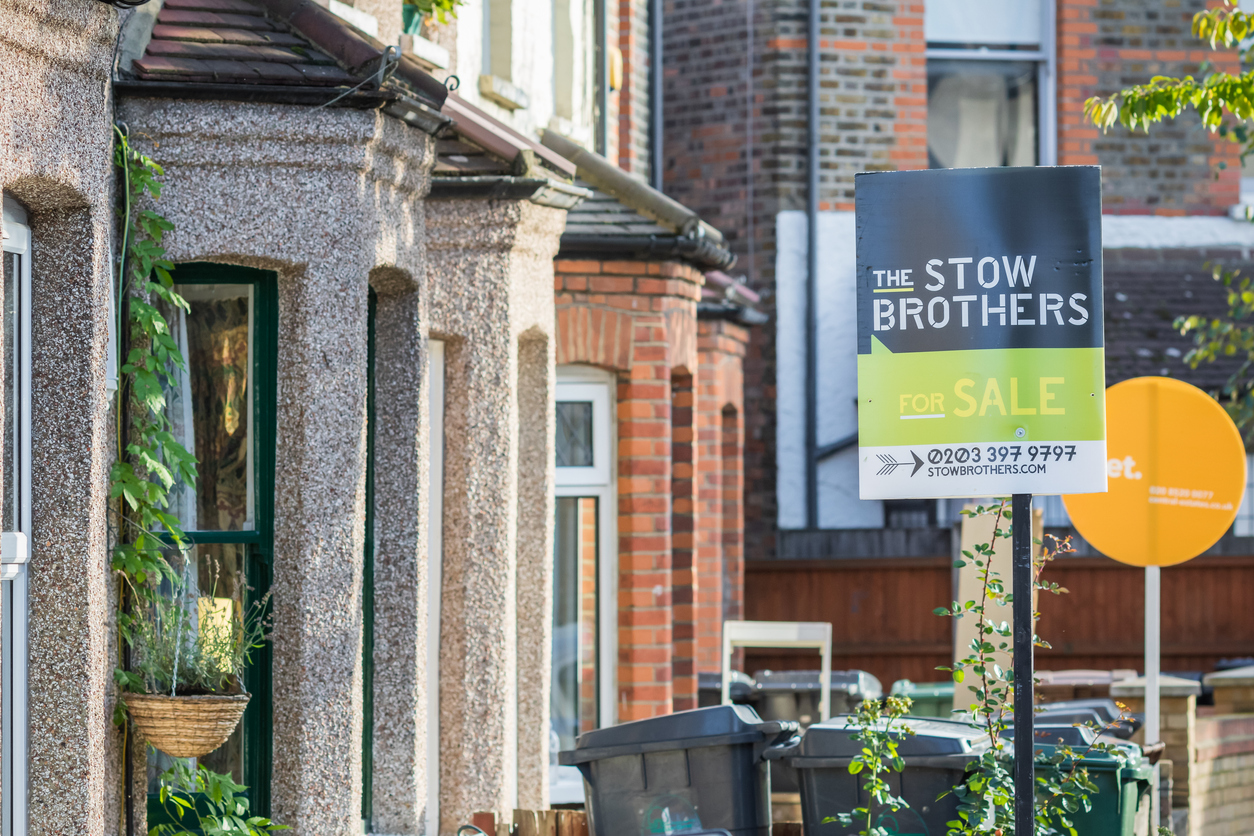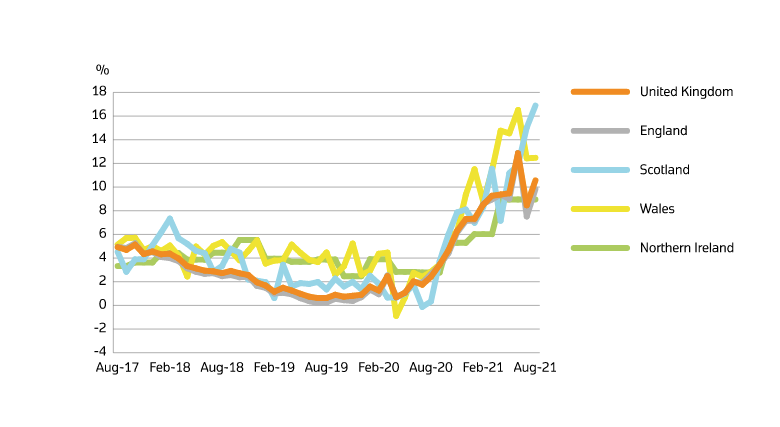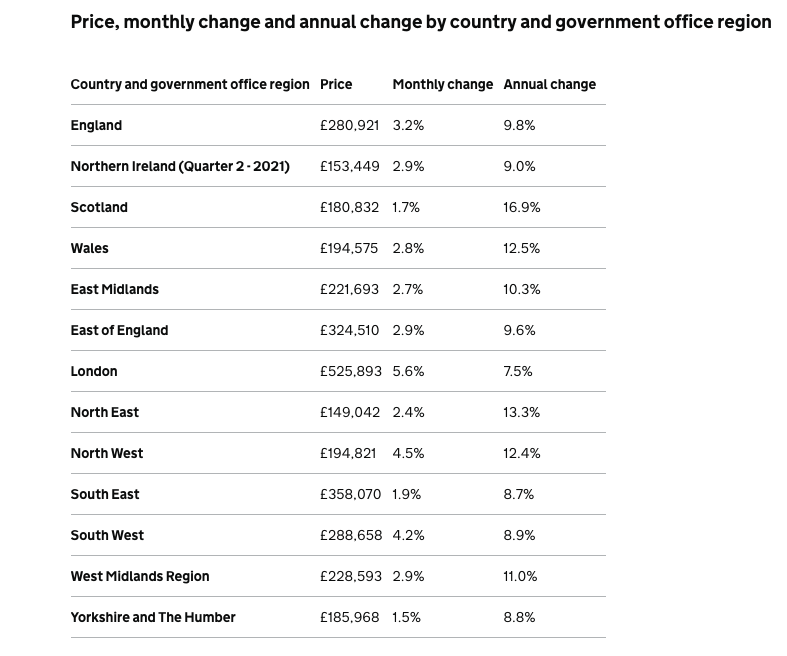Property InvestmentProperty News
Why is the UK Property Market Defying All Logic Right Now?

Although house prices boomed to record levels after the pandemic lockdowns, the predictions by many industry experts that prices could not continue to rise in this vein were widespread. However, these suggestions of the market topping out have, thus far failed to materialise as the latest data from the Office for National Statistics House Price Index confirms. But why are property prices continuing to rise, and are these rises now expected to continue? We take a look at the latest statistics and expert views.
Both uncertainties surrounding Brexit and the subsequent Covid-19 pandemic lockdowns had a huge impact on the UK’s property market. However, when the lockdowns ended, the market surged at a rate that many thought would be unsustainable. However, the latest UK House Price Index, which provides data up to August, shows that house prices are continuing to climb, rising 2.9 per cent from July to August and a huge 10.6 per cent year on year.
Although much of the recent rises can be attributed to buyers’ rushing to complete sales before the stamp duty holiday deadline, the property market is not only showing resilience but is continuing to show significant growth as buyer confidence returns.
The ONS headline statics for August 2021 reflect this growth, as follows:
-
- The average price of a property in the UK was £264,244
- The annual price change for a property in the UK was 6%
- The monthly price change for a property in the UK was 9%
- The monthly index figure (January 2015 = 100) for the UK was 6
UK House Prices By Country

At the country level, the largest annual house price growth in the year to August 2021 was recorded in Scotland, where house prices increased by 16.9 per cent.
Wales saw house prices increase by 12.5 per cent in the year to August 2021, England saw house prices increase by 9.8 per cent in the year to August 2021 while Northern Ireland saw house prices increase by 9.0 per cent over the year to Q2 (April to June) 2021.
UK House Prices By Region
By region statistics from the ONS show house price growth was strongest in the North East year-on-year where prices increased by 13.3 per cent in the year to August 2021, while the lowest annual growth was in London, where prices increased by 7.5 per cent in the year to August 2021.
However, it is clear from the ONS data that London is growing at the fastest out of all regions on a monthly basis, enjoying a 5.6 per cent rise from July to August.
Industry Comment
So why is the property market bucking the predicted trends? Property market experts from across the country have provided their views.
Director of Benham and Reeves, Marc von Grundherr, reflected on the new ONS data: “Yet further proof that the drop in property prices following the initial stamp duty holiday deadline was merely a pause for breath in an otherwise marathon run of positive market momentum.
There’s little sign of this letting up and should an increase in interest rates materialise, the likelihood is that it will be fairly palatable for the average homebuyer. Therefore, we don’t expect it to have any notable impact on the nation’s insatiable appetite for homeownership and the market should continue moving forward at pace well into next year.”
Managing Director of Barrows and Forrester, James Forrester, has a few suggestions why prices are still continuing to rise: “The current state of the market is quite remarkable given what we’ve been through as a nation since the start of last year. Employment and wage growth have remained firm, mortgage affordability is still hovering around record lows and house prices continue to climb ever higher.
As a result, buyers continue to mob the market and while an interest rate hike is on the horizon, we expect these factors to continue to stimulate positive house price growth for the remainder of the year.”
Director of Benham and Reeves, Marc von Grundherr, thinks the market is only going to get stronger now that the stamp duty holiday has ended: “With the stamp duty holiday causing manic market conditions and long delays to transaction times, many home sellers and buyers chose to retreat until the rush had subsided, having long given up hope of a stamp duty saving.
However, we will now start to see them emerge from their boltholes and this additional stock will help rejuvenate the market throughout the remainder of the year.”
Furthermore, Iain McKenzie, chief executive of the Guild of Property Professionals, said: “The number of properties available to buy started to dwindle after the first lockdown and this trend looks set to continue while demand remains high.
Just as the end of the stamp duty holiday motivated a frenzy to buy, predictions of impending mortgage rate rises are also likely to spur on buyers.”
Propertista editor’s comment: As has been the case historically, the property market has always been very resilient in the long term, and this new data from the Office for National Statistics (ONS) demonstrates just how resilient it has been.












